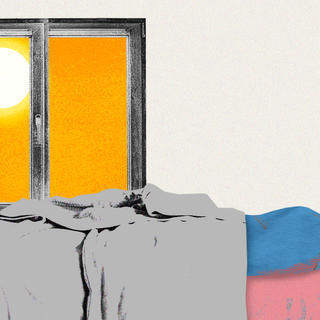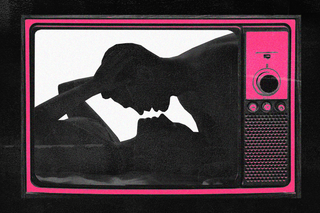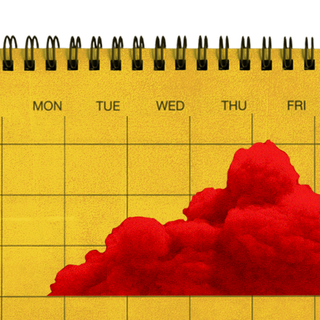
How Sexual Double Standards in Pop Culture Shape Teens’ Ideas About Gender, Sexuality
“Since peers, parents, and the media are main sources of socialization for teens… the portrayal of sexual double standards by each of these sources might influence teens’ expectations of male and female sexual beha...

The depiction of sexuality and sexual relationships in pop culture has always been problematic — if not downright flawed. Among its many issues, lies one of sexual double standards — basically, men and women not only being expected to perform different sexual roles, but also berated for deviating from such diktats. According to a new study, such portrayal isn’t harmless simply because it’s fiction; its very real impact on reality manifests in the form of shaping teenagers’ views on gender and sexuality.
“Since peers, parents, and the media are main sources of socialization for teens, the researchers investigated how the portrayal of sexual double standards by each of these sources might influence teens’ expectations of male and female sexual behavior,” notes a media report on the paper.
Published in Archives of Sexual Behavior, the study based its findings on the responses of 566 school students between the ages of 16 and 20 from the Netherlands. The participants were quizzed on their exposure to sexualization in pop culture — be it through social media, music videos, reality shows, or even online pornography. They also answered questions about their parents’ and families’ sexual views, and the sexual behaviors of their peers.
The researchers found that when adolescents were exposed to more sexual double standards in the media, they were more prone to supporting traditional gender roles in the realm of sexual behavior — like expecting men to be sexually dominant, and women to be sexually submissive; generally, outside their meanings in the BDSM context.
Related on The Swaddle:
Why Watching Porn May Make Some Women Develop More Body Image Issues Than Others
Explaining the kind of sexual double standards prevalent in media, the study material for a course exploring media’s influence on sexuality notes, “Often, sexuality in pop culture portrays wom[e]en as submissive to men or inferior to men. This is where the idea of a sex object comes in. Women are portrayed simply as objects for consumption as opposed to individuals with agency… [They] are valued for their sexuality, which refers to how attractive a woman is, how desirable she is in the eyes of a man, and how she relates to men.”
In other words, pop culture often endorses the norm of men being the sexual pursuers while expecting women to do nothing but react to such pursuit — women taking the initiative by making sexual advances opposes this traditional view. This begs the question, though: what about non-heterosexual relationships, or people on the asexuality spectrum? Evidently, not only do the sexual double standards lead to women being shamed for the very same things men are hailed and congratulated for, but they also fail to depict non-heterosexual relationships.
On the one hand, the latter is, perhaps, for the better since the “manuals of sexual behavior,” so to speak, are quite obviously harmful. But on the other hand, research has shown that non-LGBTQ+ people exposed to LGBTQ+-depiction in media became almost 50% more accepting of the community than responders who had not seen them represented in the media. Given just how many hate crimes lack of acceptance can perpetuate, more — and better — representation appears to be a powerful tool. Unfortunately, though, it’s still largely lacking.
Related on The Swaddle:
How Novels Have Shaped Women’s Understanding of Sex in the Absence of Sex Education
Thankfully, however, media wasn’t the only instrument molding teenagers’ views around sexuality; their peers’ behavior had a pertinent role to play too. If teenagers were part of a group with many sexually active female peers, they were less likely to endorse traditional sexual standards. The sexual activity of male peers didn’t appear to have an impact.
“[W]hen adolescents perceived their female peers to be highly sexually active this was associated with less adherence to [sexual double standards’] norms in adolescents, probably because this peer context was incongruent with the social norm,” noted Joyce J. Endendijk, lead author of the paper, who specializes in child and adolescent studies at Utrecht University. She added that when “peers and the media convey messages that high sexual activity and sexual dominance is approved more for boys than for girls, this was associated with more adherence to [sexual double standards’] norms in adolescents.”
Interestingly, though, the views of parents and families on sexuality didn’t appear to have as much of an influence on teenagers’ views on the subject. “Parents appear to be less important socializers of the SDS in adolescents,” Endendijk said.
Given that we can’t — and shouldn’t — control how sexually active one’s peer group choose to be, perhaps, it’s time for popular media to take responsibility for peddling toxic ideas that do nothing other than maintain the status quo of toxic masculinity.
Devrupa Rakshit is an Associate Editor at The Swaddle. She is a lawyer by education, a poet by accident, a painter by shaukh, and autistic by birth. You can find her on Instagram @devruparakshit.
Related


Spain Becomes First European Country to Approve Paid Menstrual Leave
